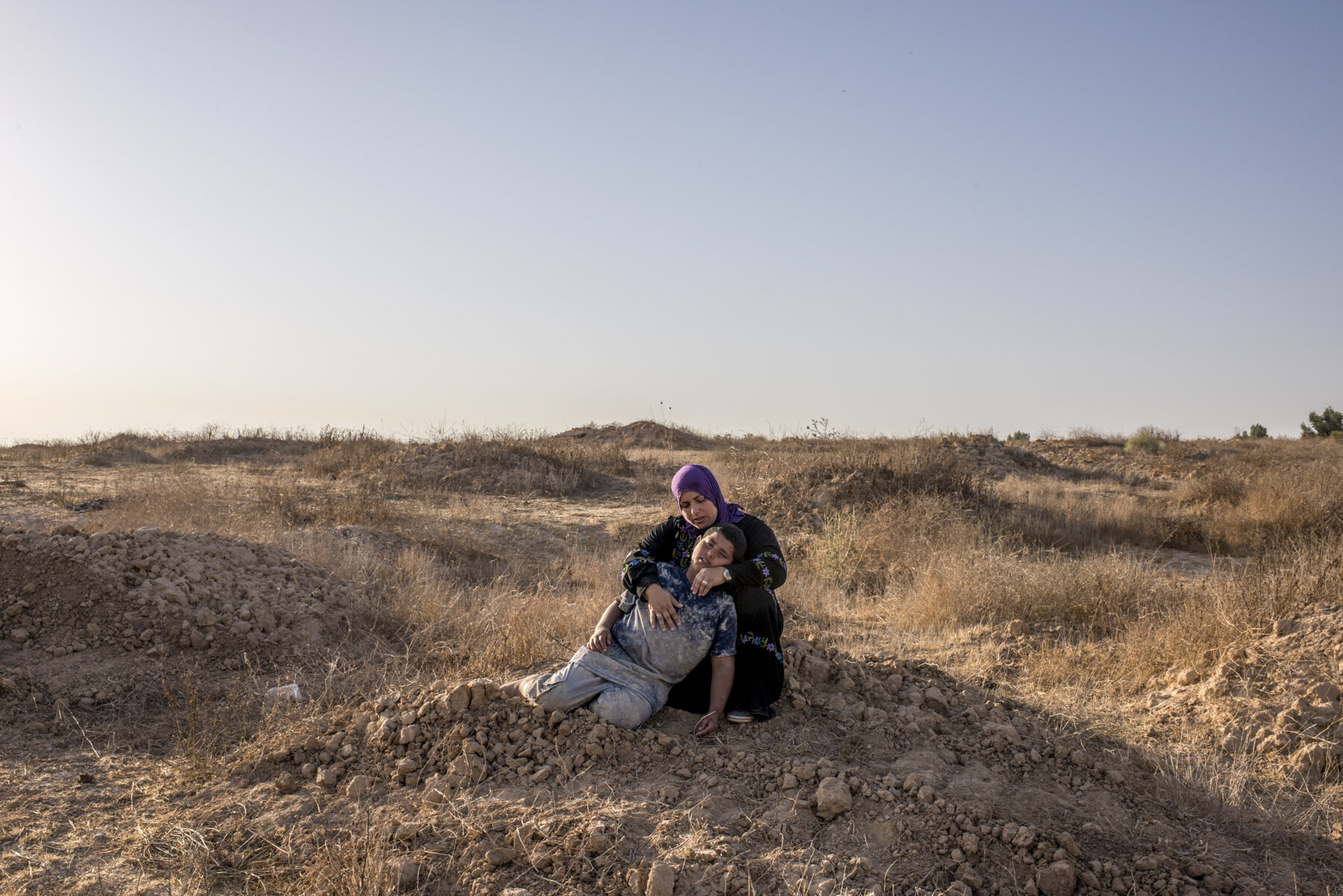The un/Holy Land
by Tanya Habjouqa
The un/Holy Land (working title) is an elegiac meditation on the interaction of the physical and psychological space encompassed in the loaded, often effacing, phrase “Holy Land”. The work draws out the complexities, contradictions, and instabilities etched into the lives of the Land’s occupied and occupying populations, tracing the ways our lives (and deaths) are interpenetrated by competing, overlapping mythologies.
Contemporary photography of life in Palestine is often reduced to “spectacular” encounters with the Israeli army and its border apparatus. Such depictions centre a narrative of Palestinian abjection contrasted with Israeli superiority. My project will destructure this pernicious, Orientalist myth, and assert a complex, richly expressed Palestinian narrative by foregrounding the ostensibly ‘confidential’, the intimate urges, hopes, and fears that are inscribed in the territory from the earth through to the culture that springs from it. Mythologies associated with faith, secularity, political power and powerlessness, and identity will be interrogated by means of photographs, videos, written dialogue, testimonies, and soundscapes. The recoding of the spatial will be a consistent leitmotif, as the work considers an Israeli population socialised into confident proprietorship of the territory and a juridically dispossessed Palestinian population determined not to be broken. The natural landscape and the palimpsestic overlays of imperial history will play a crucial role in the realisation of my thesis.
The body of work will explore physical and psychological tensions within and around landscapes and characters, capturing the multivalent realities of lives lived under and through occupation and its hegemonic logics. Visual components will centre people living on the cusp of liminal spaces, how their perception structures, orders and reorders the territory’s meaning. The characters featured in my images will be the metaphorical co-authors of this project; their understandings of the land will be embedded within the imagery in a participatory excavation of their experience and socio-political imaginaries. The result, I hope, will be an audio-visual project with immersive dimensions, offering people a multitude of ways to learn and unlearn the material and psychic space that defines the so-called “Holy Land”.
From a personal perspective, Un/Holy Land is a culmination of ten years living in Palestine as a photojournalist and artist in the light of my personal positioning as a Jordanian-Texan mother raising two Palestinian children in East Jerusalem. The project reflects my relationship to my adopted home and an inherent diasporic longing to reflect on the land that is Palestine. Raising my children here and trying to nurture their identity as Palestinians is challenging, but it also a richly intimate precious experience. To successfully mother them I must combine an ethic of care which actively confronts the adverse conditions and structural limitations that will define their lives. Their lives are Palestinian lives first, lives inscribed with the dualities that extend beyond the illusions of agency and personal efficacy to global geopolitical status that define and proscribe this most complex of identities. In my work I hope to express such tensions, contrasting what is deemed to be ‘ordinary’ with its disruption by means of space, law, and embodiment.
Building on the methodologies deployed in my previous work, I will include a series of character studies engaging a diverse cast of characters, modulating between realist and surrealist aesthetics deployed against the backdrop of quotidian events. In the past my work has broadly depicted Palestinian characters affected by Israeli policies, but this body of work will seek to provide a wider view of Palestinian life; it will also include Israeli characters (settlers, rabbis, etc.) and spaces that adversely and violently bear upon the lives of Palestinians. The purpose of this expanded approach is to attempt to explore and destructure the intellectual architecture of the occupation’s mindset , underwritten as it is by myths of nationalism, religion, and militarism which feed forward into the dispossession and depredations of the lived occupation.
The Un/Holy Land engages with stories of occupation and incarceration which contain varied, often unanticipated, narrative dimensions. Absurdism, rooted in aesthetic and literary practices indigenous to the non-Western tradition as well as Eurocentric forms like DaDa and Bretonian “sur-realism” permeates my ethnographic work, subverting the purported “reality” of my images. As I explore the dimensionalities of geopolitics, biopolitics and necropolitics as they intersect in contemporary Palestine, I will seek to embed myself within the day-to-day context of my characters to pay homage to their personal complexities and often contradictory experiences, presenting a disquieting simulacrum of the uneasy, unstable realities they themselves face in a life circumscribed by the priorities of an external colonial authority.
From the perspective of geopolitics, I will visually explore the intrusion of the Israeli state security apparatus into the intimate geographies of Palestinian cultural and personal expression, for example, family homes and sites of worship. Often such intrusions themselves veer into the absurd, for example, Palestinians forced to smuggle sperm out of Israeli prisons so that their spouses can conceive in their husband’s absence. This is juxtaposed against images of Israeli sperm banks that only accept donations from Jews who have served in the military, and parents can browse with profiles to tailor the genetic lineage of their babies. Biopolitical power asymmetries have scarcely been so stark or explicit. As the film explores, the necropolitical end of the occupation is also very sharp edged, from restrictions on food imports to Gaza during military siege, to the response to the current Covid-19 pandemic by occupation authorities.
Through collaboration with my co-authors, I will seek to create a body of work for audiences in the region and internationally, inviting them to reimagine the narratives of disempowerment, dehumanisation, and victimhood which frequently associated with Palestinian life in media. I will also seek to engage international individuals and entities with enduring presences in the region who play a role in depicting the Palestinian narrative, e.g. academics, journalists, artists, and storytellers.






































